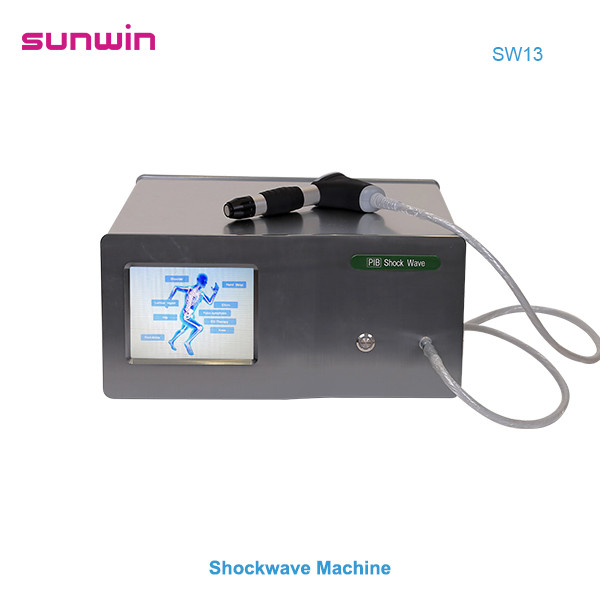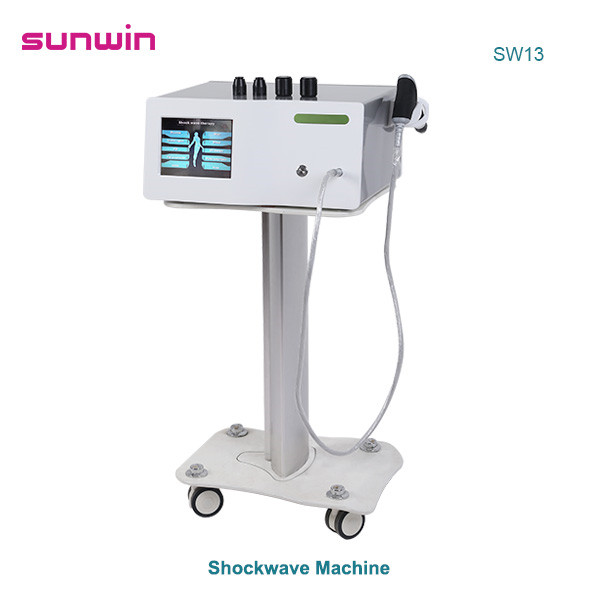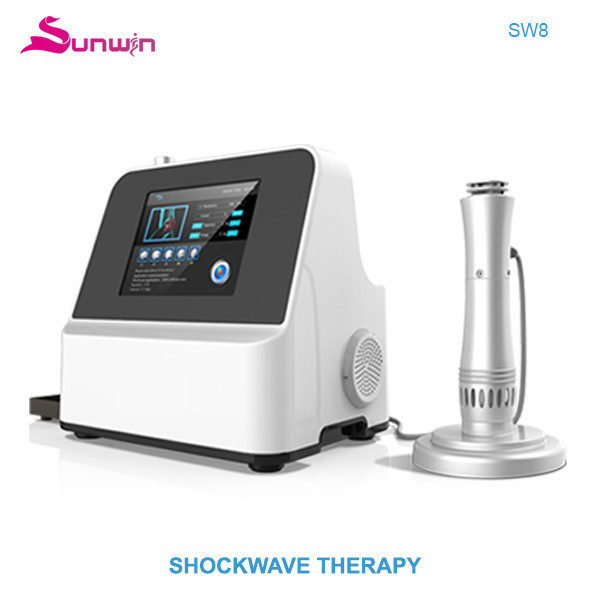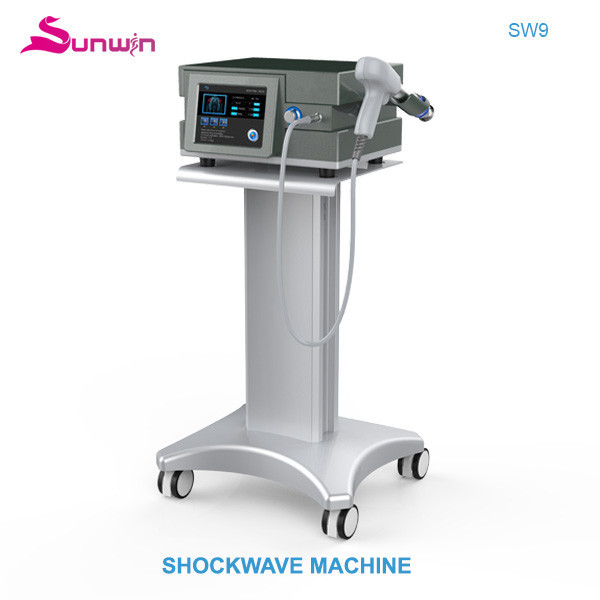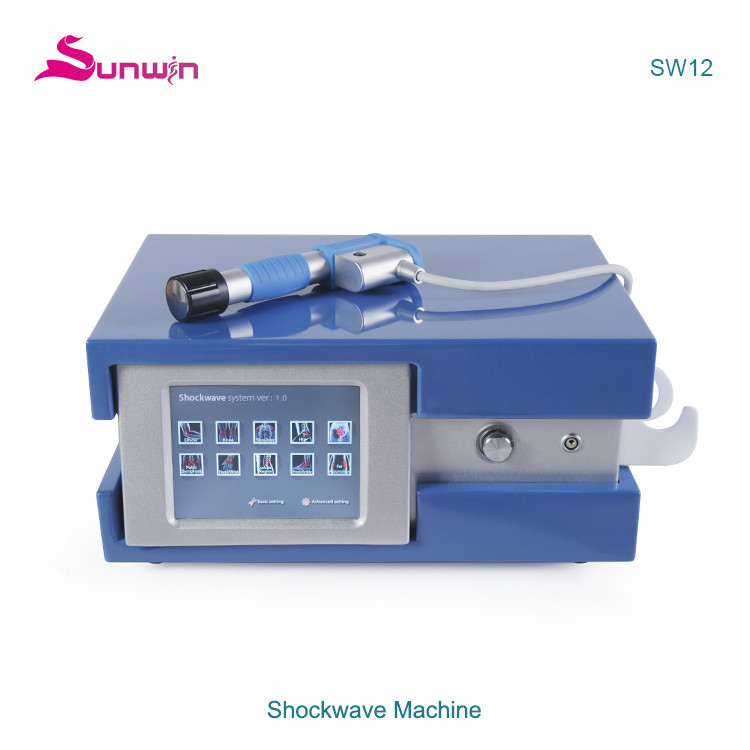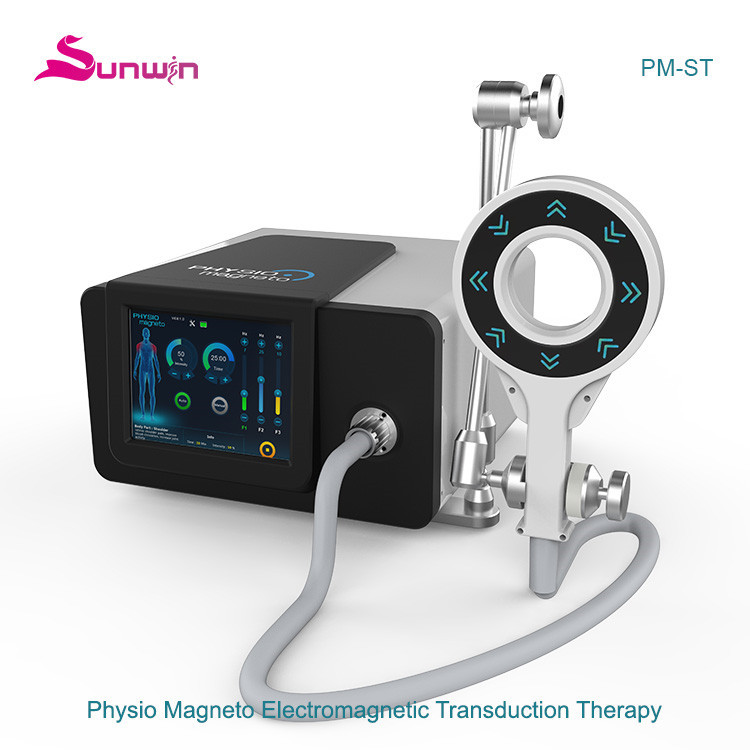▲Shockwave Therapy System
SW-PM-ST-6 EMTT physiotherapy magnetotherapy pemf magnetic therapy pain relief equipment
- physiotherapy electrotherapy
- magnetic therapy ring
- physiotherapy equipment rehabilitation
- EMTT

Theory
According to the principle of Faraday electromagnetic induction, a large amount of energy is quickly discharged from large-capacity storage capacitors to the coil. The coil is stimulated by strong current to produce pulse magnetic field, it can penetrate clothing, bones and other tissues, generate inductive electric fields in stimulating parts, causing excitement/suppression activities of nerve cells, and then generate a series of physiological biochemical reactions.
Magneto Therapy pulses a magnetic field into the body, creating an extraordinary healing effect. The results are less pain, reduction in swelling, and increased range of motion in the affected areas
It can be divided into low-frequency TMS (<1Hz) and high-frequency TMS (>5Hz) according to different frequencies.
Different frequencies TMS is different in regulating the sports cortex:
high-frequency TMS: Increase the excitement of the cortex;
low-frequency TMS: decrease the excitement of the cortex.
TMS is divided into sTMS, pTMS, and rTMS according to the stimulus mode.
sTMS: A single-time magnetic field with a non-fixed frequency is used to observe the instantaneous effect, and it is mostly used for conventional electrical physiological examinations.
pTMS: Based on a specific time interval and intensity, 2 stimuli is given to one specific area or two different parts, which are mostly used to study the easilyization and inhibitory effects of the nerves.
rTMS: During a certain area, the magnetic field is changed at a certain frequency. After the stimulus stops, there is still a continuous biological effect. It is a powerful tool for brain function research and clinical treatment.

(1) High strength
The stimulus strength can reach 4T, and the frequency can be adjusted from 0-100Hz
Stimulate depth: 8cm under the skin
Fully stimulate nerve and deep muscle tissue
(2) Focus
The unique U-shaped coil makes the magnetic field line gather in the middle, it can deeply stimulate the affected area.
(3) Safe
Intelligent variable frequency air cooling heat dissipation system is safer and the heat dissipation rate is higher. Avoid the cost of fluid change generated by liquid cooling and the risk of leakage liquid, zero maintenance cost.
(4) Comfortable
Unique progressive change pulse: slowly rising - continuous high-intensity stimulation - slowly decrease.
Acceptable, painless, more comfortable body sensation.
(5) Easy to locate
360 ° telescopic positioning bracket can adjust multiple angles and fix the coil position to free the hand, and the operation is convenient.
(6) Smart and convenient operating system
It takes only three steps to start treatment, which is convenient and fast.


Function
It uses magnetic field to stimulate muscle tissue and nerves through clothes and skin without decaying, so that it generates inductive current, a non-invasive, painless stimulus to tissue and peripheral nerves, which can accelerate metabolism and blood circulation, enhance the body immunity, soothe pain, reduce muscle soreness, restore damaged cells to normal health, regulate and improve physical function.
(1) Muscle pathology (contracture, muscle tears, bruises and swelling).
(2) Bone injuries, osteoarticular distractions and wear of the joints (shoulder, hips, knees, ankle joints).
(3) Pathology of the elbow, wrist and arms (epicondylitis, tendinitis, carpal tunnel syndrome).
(4) Inflammation and damage to the Achilles tendon and ligament.
(5) Tendonitis in the shoulder joint area and chronic edema.

Categories
- ▲Nail Printer
- ▲HIFU SMAS Face Body Vaginal System/Vmax/Lipo
- ▲Fractional microneedle/Thermal RF face lifting
- ▲IPL/OPT/Elight/RF/ND YAG multifunction
- ▲PDT/LED Skin Care System
- ▲Picosecond Laser/ Q-Switch Laser System
- ▲808nm/3 wavelength 1064+755+808nm diode laser hair removal
- ▲HIEMT/ Emslim Muscle Build&Fat Burn
- ▲Fractional CO2 laser/Vaginal tightening
- ▲Q-switched ND yag laser
- ▲Weight Loss System/Vela/Cryolipolysis/RF Cavitation/Lipolaser/Shockwave RF
- ▲Plasma Pen Lifting/Plasma shower skin rejuvenation
- ▲Oxygen Jet/H2O2 Facial Cleaning Skin Care
- ▲Shockwave Therapy System
- ▲Inner Ball Roller Massage Therapy
- ▲Spa Capsule/Vichy Shower/Infrared Cabin System
- ▲Derma Roller/Derma Pen
- ▲EMS/Non-needle/Micro-Needle Mesotherapy Series
- ▲Body/ Skin Analyzer
Latest News
- Far Infrared Pressotherapy For Ly2019-12-07
- Diamond Microdermabrasion2019-11-20
- Shockwave Therapy For Pain Relief2019-11-08
- LED Light Therapy Treatment2019-10-23
- Laser Hyperpigmentation Treatment2019-10-12
Contact Us
Contact: Annie
Phone: 0086-15902095923
Tel: 0086-15902095923
Add: Guangzhou City,China.





